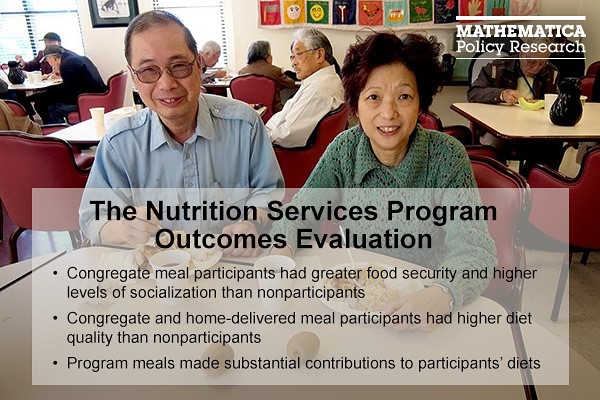
Adequate nutrition is critical for people of all ages, but it is especially important for older adults. The Nutrition Services Program (NSP), administered by the Administration on Aging within the Administration for Community Living, is designed to alleviate hunger and food insecurity among the elderly while also giving them the opportunity to enrich their social lives. The NSP aims to achieve these goals, in part, by serving congregate meals at senior centers or other community settings and providing home-delivered meals to homebound participants. A new fact sheet from Mathematica Policy Research describes NSP participants’ characteristics; reveals their impressions of the program’s meals and services; and estimates the program’s impact on participants’ food security, social engagement, and diet quality.
Click here to learn more about Mathematica’s three-part evaluation of the NSP and here to access the fact sheet.

